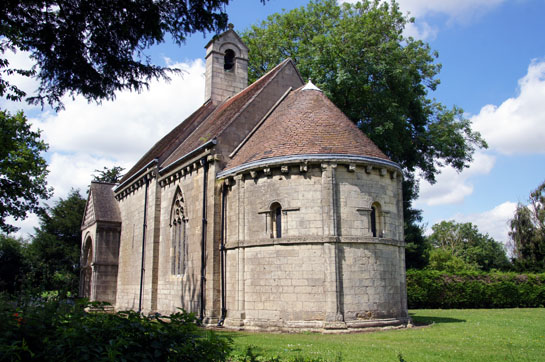|
Alphabetical List |
|
|
|
|
|
|
|
County List and Topics |
|
|
|
Please sign my Guestbook and leave feedback |
|
|
||||||||||||||
|
would agree with that (Kilpeck in Herefordshire is exquisite to name but one title contender) but it is certainly a thing of beauty. It dates from around 1150 (I have seen 1120 suggested as well) and has its original 3-celled plan. There are Norman arches between each pair of cells. The apse is beautifully proportioned. Its windows are superbly carved and around its circumference half-way up is a string course with decorative carving. Apses are a rare survival in England. Most of our finest Norman churches had rectangular chancels (Barfreston, Patrixbourne, Iffley, Tickencote to name four) and there is a whole host of churches that still have a Norman core but where the original apse is covered by a later and larger chancel. When you think about it, it’s not hard to see why. A semi-circular apse cannot have a radius wider than the nave behind. Simple geometry tells you that the apse’s area is therefore constrained to no bigger than half*pi*r*radius squared. Of those others remaining I can think of only one other - Kilpeck - that has rib vaulting. What is really exciting here is that all of the ribs are adorned with beakhead courses which is probably unique in England. What’s more, the beakheads are on both sides of the ribs. Almost all other Norman apse ribs in England have either chevron moulding or are plain. Each of the ribs has a carved capital. Every way you look at it Steetly’s apse is unique. The south door would have been a wonder to behold but it has been weathered so that the once-splendid decoration has all but disappeared. Pearson surrounded it with what the books call a porch but which is really no more than a framework to surround the doorway. The gable above it has a network of non-Norman designs within a latticework grid. Below that is a series of beakhead-like corbel carvings. Pearson adopted a sympathetic style rather than trying to reproduce the Norman style and I think it is perhaps the better for that, though others would doubtless disagree. Apart from the porch and the somewhat unfortunate gothic style window on the south wall this is still essentially the Norman church as it was built. |
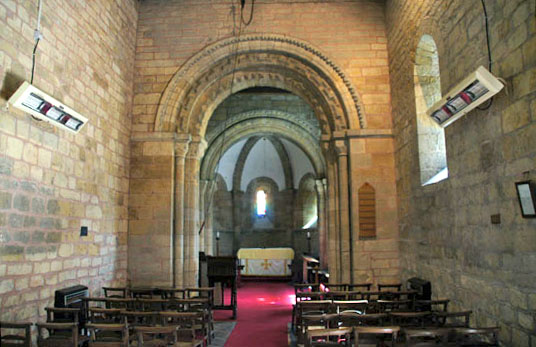 |
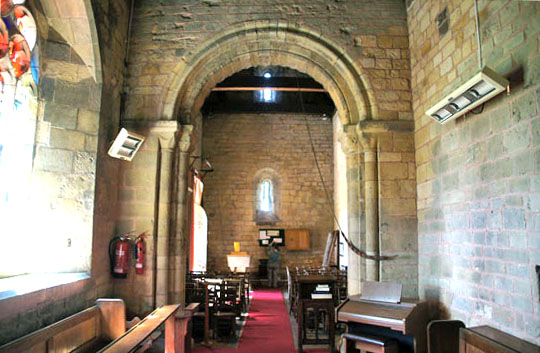 |
|||||||||||||||||||||||||||||||||||||||||||||||||||||||||||||||||||
|
Left: The view through the two Norman arches to the eastern apse. Right: The view to the west from the choir. |
||||||||||||||||||||||||||||||||||||||||||||||||||||||||||||||||||||
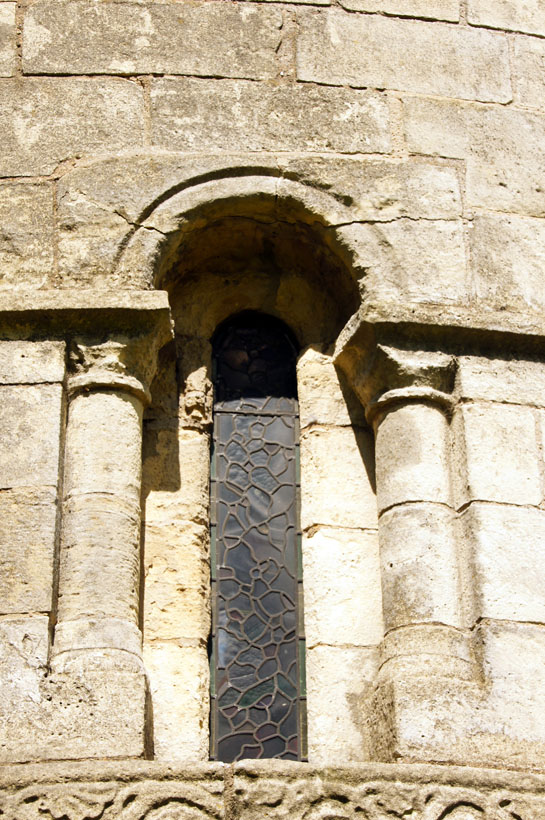 |
||||||||||||||||||||||||||||||||||||||||||||||||||||||||||||||||||||
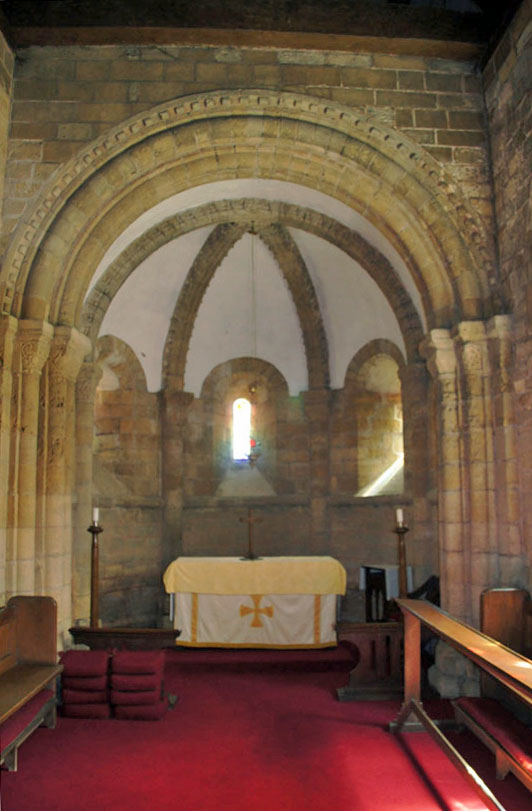 |
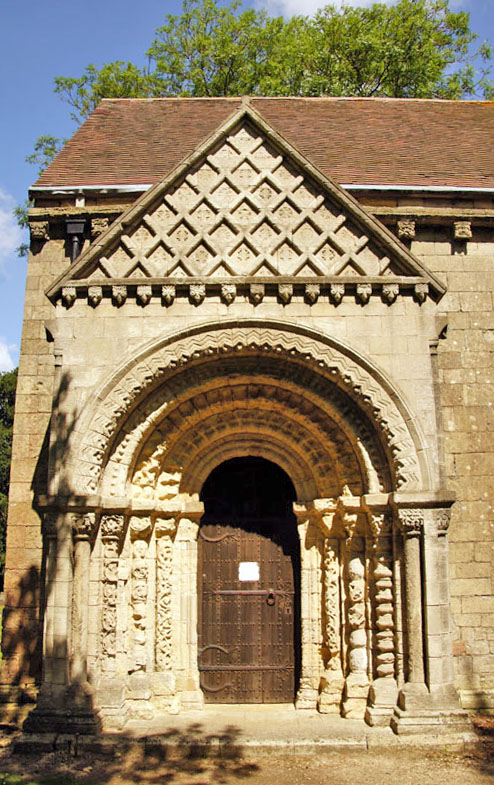 |
|||||||||||||||||||||||||||||||||||||||||||||||||||||||||||||||||||
|
Left: The apse. Note the unusual configuration of the rib vault with no ribs between the arch and the central point. Centre: The south door surrounded by its Victorian “porch”. Right: One of the three apse windows from the outside. |
||||||||||||||||||||||||||||||||||||||||||||||||||||||||||||||||||||
 |
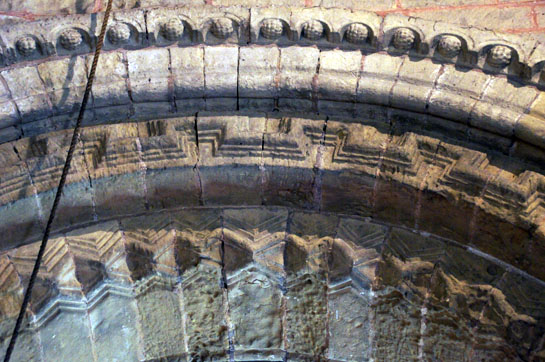 |
|||||||||||||||||||||||||||||||||||||||||||||||||||||||||||||||||||
|
A study in two arches. Left: The badly eroded south doorway arch. Right: The archway through to the choir from the nave. |
||||||||||||||||||||||||||||||||||||||||||||||||||||||||||||||||||||
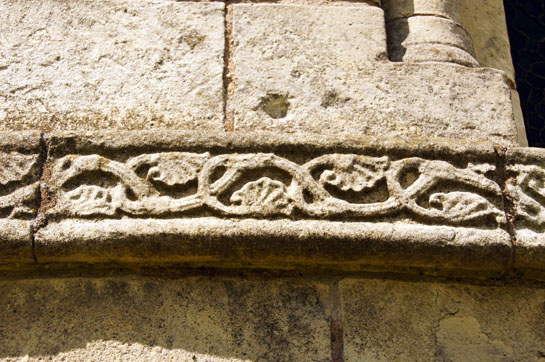 |
||||||||||||||||||||||||||||||||||||||||||||||||||||||||||||||||||||
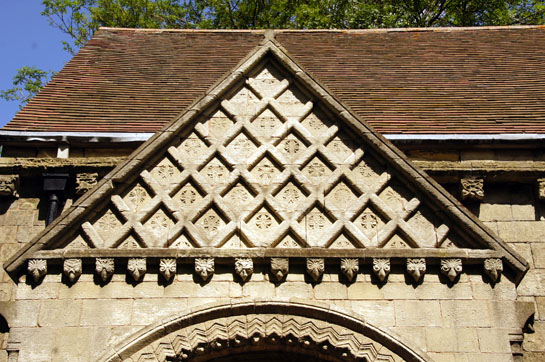 |
||||||||||||||||||||||||||||||||||||||||||||||||||||||||||||||||||||
|
Left: Pearson’s flight of fancy over the south porch with its faux-Norman beakheads. Right: This lovely Romanesque string course runs round the whole of the apse at just below window level. |
||||||||||||||||||||||||||||||||||||||||||||||||||||||||||||||||||||
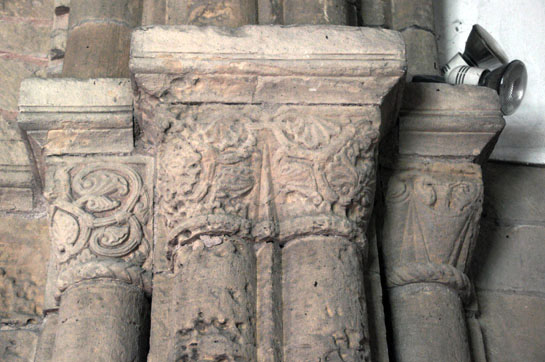 |
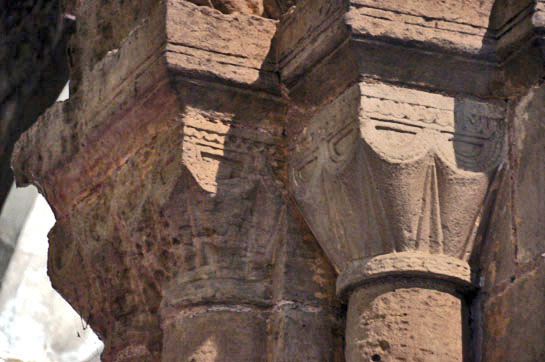 |
|||||||||||||||||||||||||||||||||||||||||||||||||||||||||||||||||||
|
The Chancel Arch Capitals. Left: The north side Right: The south side. |
||||||||||||||||||||||||||||||||||||||||||||||||||||||||||||||||||||
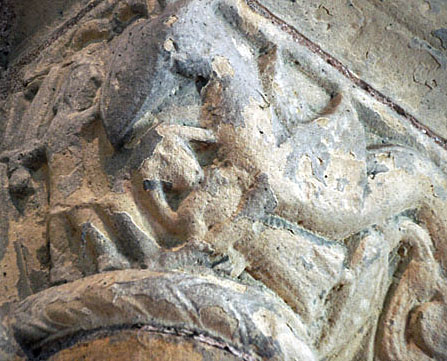 |
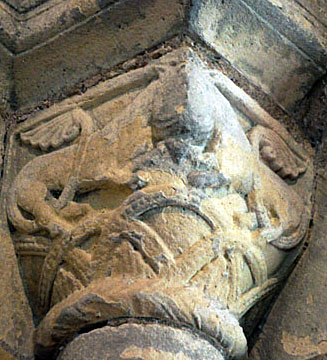 |
|||||||||||||||||||||||||||||||||||||||||||||||||||||||||||||||||||
|
Steetly’s interior capitals are amongst its most interesting features. These two are from the north side of the apsidal arch. Left: A somewhat Norman-looking St George tackles a feisty dragon. Right: A two-bodied lion figure. |
||||||||||||||||||||||||||||||||||||||||||||||||||||||||||||||||||||
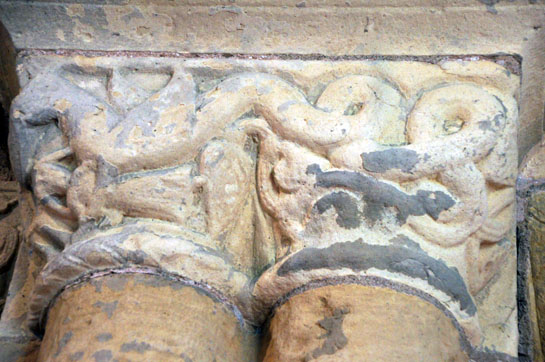 |
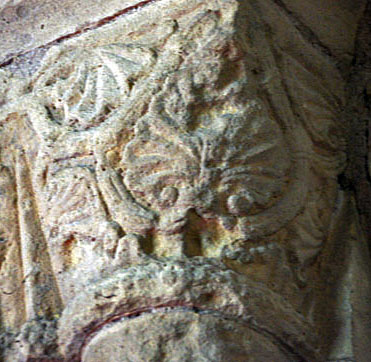 |
|||||||||||||||||||||||||||||||||||||||||||||||||||||||||||||||||||
|
Left: The extraordinarily elaborate dragon. My money would be on this monstrous dragon, not the weedy St George! Note the unfortunate “maiden” in his clutches on the left. Hope she was suitably grateful to George for her rescue! Right: Detail from the chancel arch capitals. |
||||||||||||||||||||||||||||||||||||||||||||||||||||||||||||||||||||
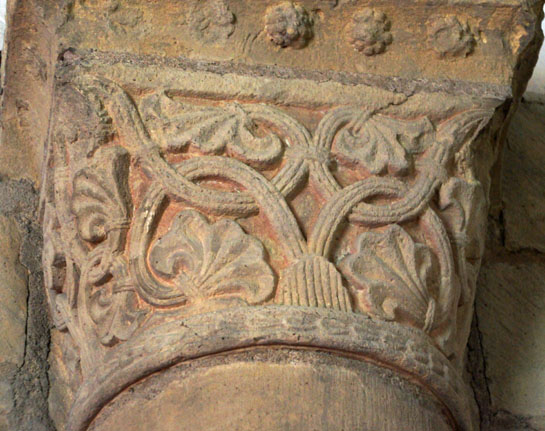 |
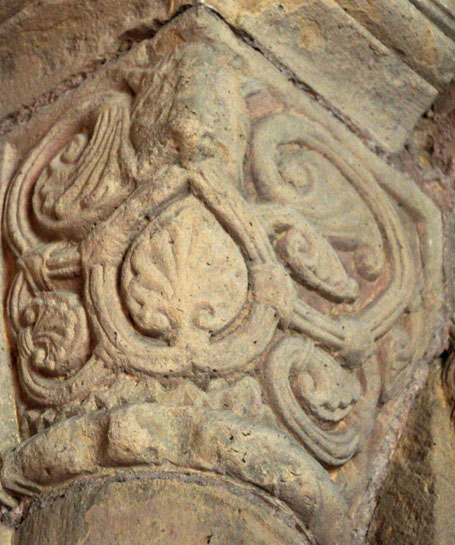 |
|||||||||||||||||||||||||||||||||||||||||||||||||||||||||||||||||||
|
Left and Right: Stylised chancel arch capitals. |
||||||||||||||||||||||||||||||||||||||||||||||||||||||||||||||||||||
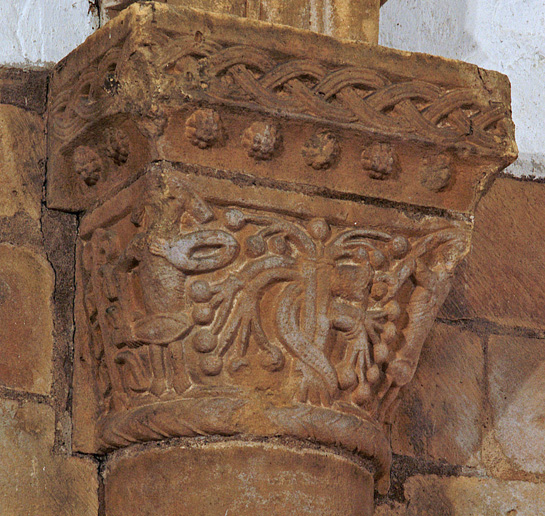 |
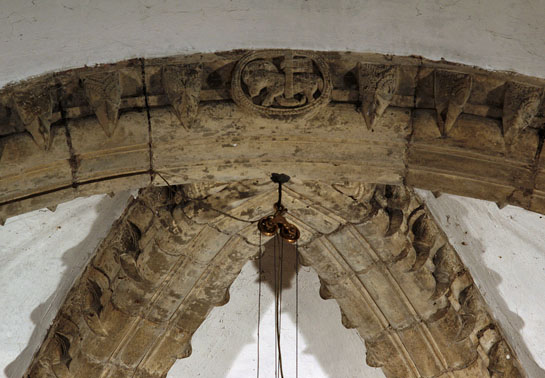 |
|||||||||||||||||||||||||||||||||||||||||||||||||||||||||||||||||||
|
Left: My favourite of the capitals is this one depicting Adam and Eve that supports one of the ribs in the apse. On the left Adam, for come unaccountable reason, seems to be clutching a large sword with which he did not apparently slay the serpent. The said serpent is entwined around a fruit-laden Tree Of Life in the centre. Eve is to the right. Right: The central point of the rib vaulting. Note that all the ribs have beakheads on both sides which is, to the best of my knowledge, unique. An agnus dei faces towards the west. |
||||||||||||||||||||||||||||||||||||||||||||||||||||||||||||||||||||
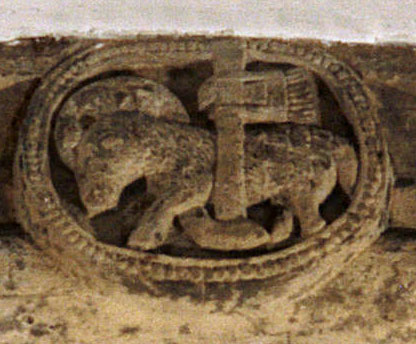 |
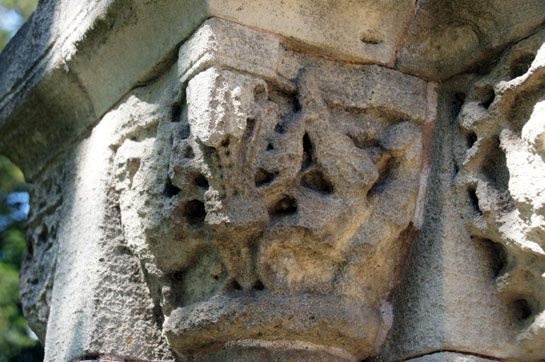 |
|||||||||||||||||||||||||||||||||||||||||||||||||||||||||||||||||||
|
Left: The agnus dei carving is actually a rather fine one. The lamb looks quite like a lamb (for once) and has elaborate halo and flag. Right: The south door capitals are grievously weathered. |
||||||||||||||||||||||||||||||||||||||||||||||||||||||||||||||||||||
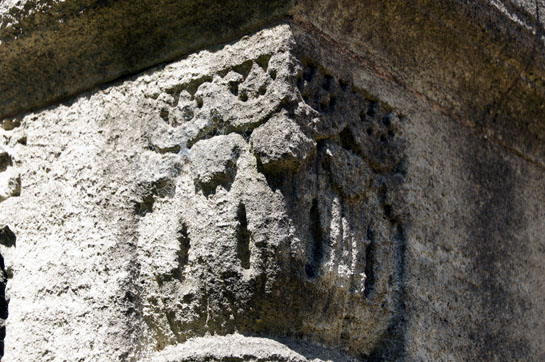 |
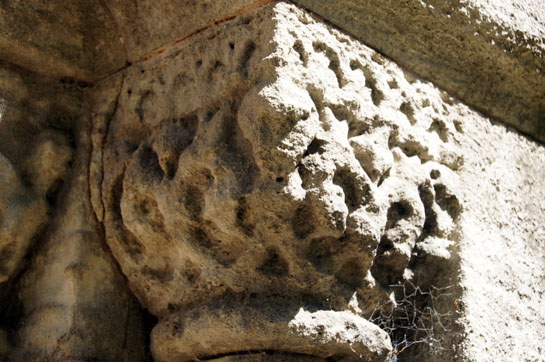 |
|||||||||||||||||||||||||||||||||||||||||||||||||||||||||||||||||||
|
Left and Right: More south door capitals. |
||||||||||||||||||||||||||||||||||||||||||||||||||||||||||||||||||||
 |
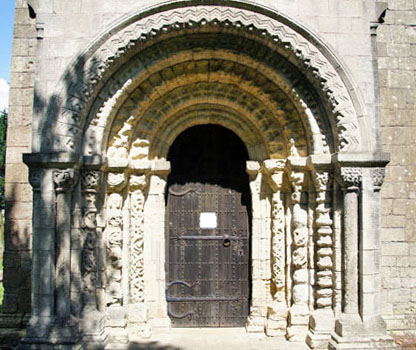 |
|||||||||||||||||||||||||||||||||||||||||||||||||||||||||||||||||||
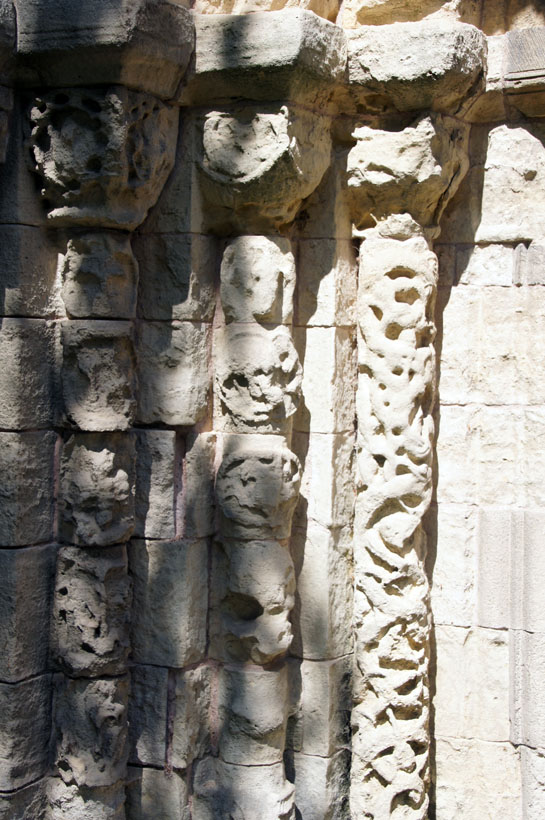 |
||||||||||||||||||||||||||||||||||||||||||||||||||||||||||||||||||||
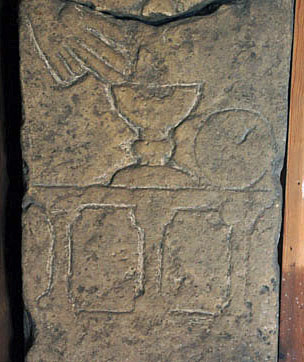 |
||||||||||||||||||||||||||||||||||||||||||||||||||||||||||||||||||||
|
Left: The left side of the south doorway. The decoration here is described in some detail within the Church Guide. Sadly, this is an example of a church that has clearly used an antiquarian text and so what is visible now is very much less clear that it was when it was described! Centre: Within the church is this priest’s grave cover. It was found outside the church accompanied by the deceased’s skull. The maltese-style crosses have clearly been drawn using compasses. Below the cross ate the top (below right) a hand is extended in blessing towards an altar table complete with chalice and paten - a plate for the eucharist. Above Right: The south door. |
||||||||||||||||||||||||||||||||||||||||||||||||||||||||||||||||||||
 |
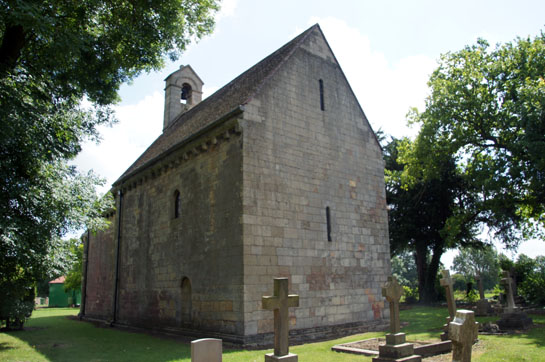 |
|||||||||||||||||||||||||||||||||||||||||||||||||||||||||||||||||||
|
Left: The south door has five orders, the innermost one being plain. The second and third orders have weathered beakheads. Right: The church from the north west. The bell cote is, of course, Victorian and is oddly-placed at the east rather at the west end of the nave. The west and north windows are original Norman. Note also the blocked Norman north doorway. |
||||||||||||||||||||||||||||||||||||||||||||||||||||||||||||||||||||
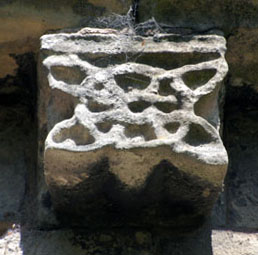 |
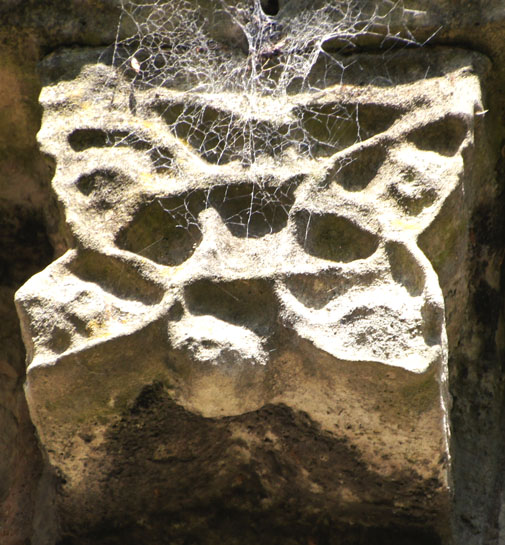 |
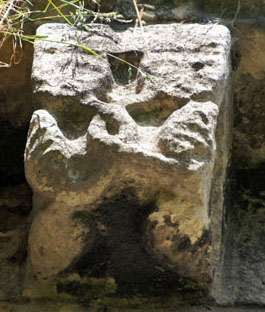 |
||||||||||||||||||||||||||||||||||||||||||||||||||||||||||||||||||
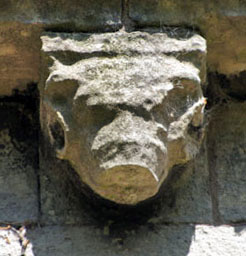 |
||||||||||||||||||||||||||||||||||||||||||||||||||||||||||||||||||||
|
The corbel table at Steetly has survived the ravages of time rather better than the doorway, although a toll has been taken. Most of the carvings are the usual array of heads in various postures that may or not be symbolic. Just two, however, are geometric and one of them (left above) is assuredly another instance of the Platonic “circle interlaced with arcs” symbolism identified by the late Mary Curtis Webb. See particularly links to and from my North West Norfolk School of fonts and Northamptonshire Fonts and Plato’s Cosmos pages. Second left is another geometric device that probably has similar symbolism. Third left is a Ram’s Head without which no Norman corbel table was complete. It is variously the symbol of Aries in astrology, the ram sacrificed by Abraham when God intervened to stop his sacrificing his son, Isaac or a symbol of the Apostles.. We see the similarly ubiquitous faces looking in opposite directions. Bottom right is a wonderfully rude tongue poker. He has survived so well that he may well be a replacement. |
||||||||||||||||||||||||||||||||||||||||||||||||||||||||||||||||||||
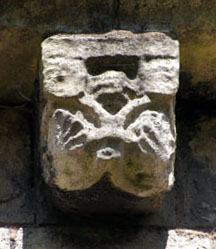 |
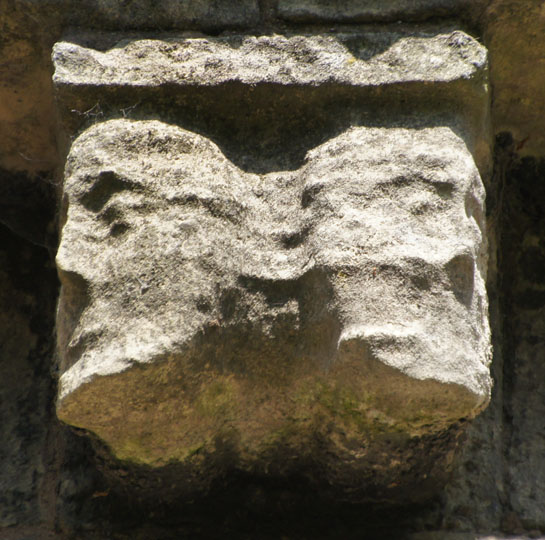 |
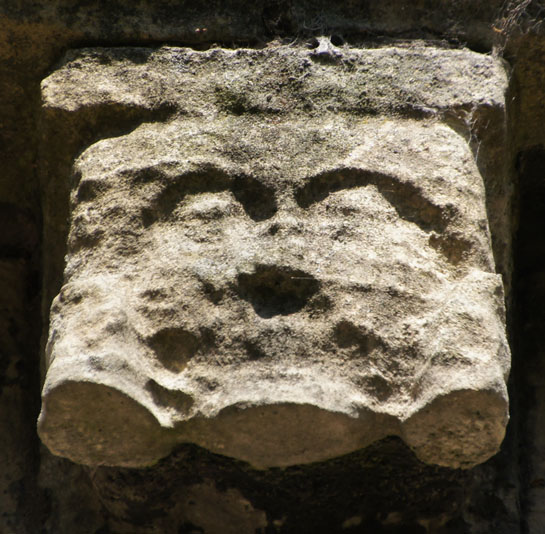 |
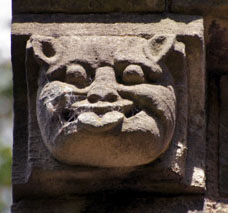 |
|||||||||||||||||||||||||||||||||||||||||||||||||||||||||||||||||
|
|
||||||||||||||||||||||||||||||||||||||||||||||||||||||||||||||||||||
